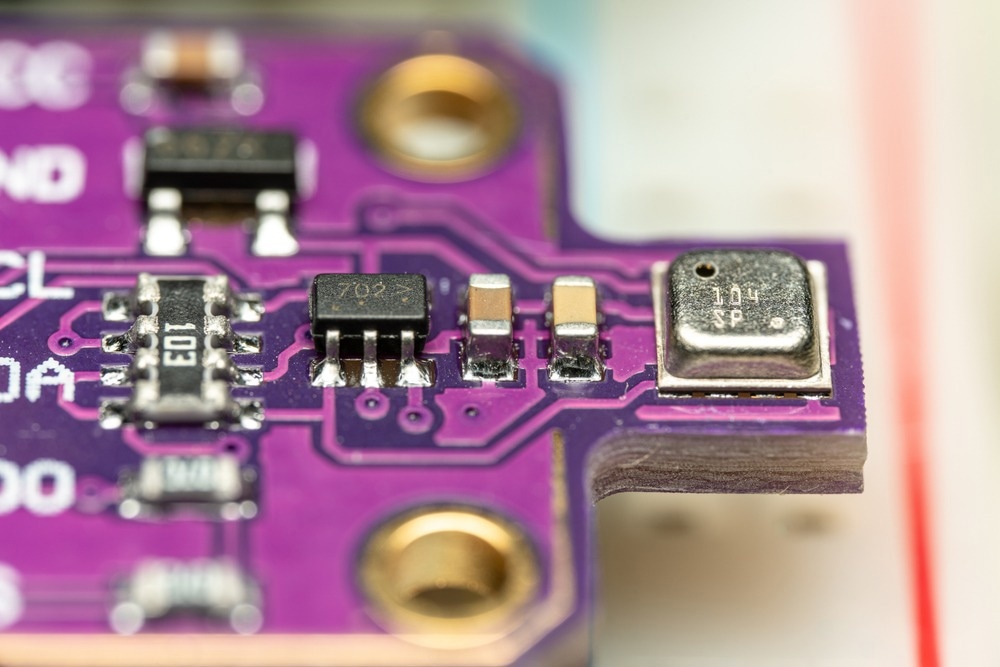Silicon photonics-based on-chip spectrometer is an energy-efficient, cost-effective, and compact solution to address the issues of hyperspectral imaging and biochemical spectroscopy. In addition, this on-chip spectrometer could offer an advantage of portability. However, despite the vital role of mid-infrared (MIR) spectral bands in spectroscopic sensing, the existing on-chip spectrometers are devoid of MIR bands.

Study: MEMS-Enabled On-Chip Computational Mid-Infrared Spectrometer Using Silicon Photonics. Image Credit: Jack Soldano/Shutterstock.com
In an article recently published in the journal ACS Photonics, researchers used a micro-electromechanical system (MEMS)-based silicon photonic device to design an on-chip computational spectrometer in MIR. They achieved this by modulating the time-domain of waveguide couplers.
Since the on-chip spectrometer is electrostatically actuated, it offers the advantage of low power consumption. In addition, it features single-pixel detection, and its multiplexing provides a high signal-to-noise ratio (SNR). They experimentally reconstructed the laser spectrum over a large bandwidth and used the superposition principle to achieve a polychromatic light of narrow width.
Optical Spectrometry
Material analysis and biochemical sensing instruments rely highly on optical spectrometers. The spectrometer systems are applied in agriculture, environmental science, marine science, and the food industry. Hence, miniaturizing the optical spectrometers can facilitate facile spectroscopy analysis and makes the process instantaneous. Photonic integrated circuits (PIC)-based chip-scale spectrometers are cost-effective, and compact spectrometer systems leverage the advantages of complementary metal-oxide semiconductor (CMOS) integration and compatibility.
PIC-based on-chip spectrometers rely on narrowband filters, planar dispersive gratings, Fourier transform (FT) interferometers, and their spectral channel division can provide high resolution. Due to the split in spectral channels, these devices may suffer the problem of SNR. Additionally, the requirement of a detector array for multichannel architecture increases the complexity, cost, and footprint of PICs.
Intrinsically, FT spectrometers come with the advantages of multiplexing and high optical throughput and bring high SNR. Implementation of an on-chip FT spectrometer with digitalized control and a single-pixel detector is achieved by reconfiguring the components in PIC circuits. Integrating on-chip optical functionalities into MIR photonic devices is highly desirable for MIR region on-chip applications.
The free carrier injection, mechanical motion, and thermo-optic tuning are a few reconfiguration mechanisms demonstrated in the MIR region. A platform that integrates the optical MEMS on silicon-on-insulator (SOI) is desirable for MIR reconfigurable photonics. Buried oxide (BOX) layer removal enables the on-chip photonic waveguide’s mechanical motion and removes the BOX-induced optical loss in the MIR region, sustaining the cost-effectiveness and competitiveness of SOI technology
MEMS-enabled On-chip Mid-infrared Spectrometer
In the present study, the researchers demonstrated a computational spectrometer based on MIR on-chip silicon MEMS (Si-McS) which worked around the wavelength of 4 micrometers and involved an SOI platform with a pair of simple MEMS tunable waveguide couplers. The Si-McS concept proposed by the researchers leveraged the intrinsic advantages of FT in on-chip spectroscopy. It ensured a high SNR in addition to the photodetector simplification to single pixel.
The current approach demonstrated a superior on-chip reconfiguration photonics performance in the MIR SOI platform.
This platform overcomes the limitation of SOI in the MIR region, facilitating its integration into a chip by leveraging the SOI platform’s infrastructures. The chip-level integration contributed to the compactness and high performance of the Si-McS approach in MIR.
The researchers achieved the waveguide coupler’s tuning using electrostatic actuation in the designed three-dimensional (3D) heterogeneous integrated device. MEMS tunable waveguide coupler’s time-domain actuation helped in acquiring the spectra. Furthermore, they implemented regression methods regularized by machine learning to reconstruct the spectra computationally.
Based on the linear superposition principle, the team used laser measurement results to reconstruct the polychromatic spectrum. The results obtained from double wavelength reconstruction showed a 3 nanometers resolution of Si-McS device.
The researchers placed a nitrous oxide (N2O) gas inflated cell and examined the capability of Si-McS device for reconstructing the absorption spectrum of N2O gas. The results confirmed that the N2O spectral absorption characteristic was well reconstructed and recognized.
Conclusion
In summary, the researchers used a reconfigurable MIR silicon photonic device and demonstrated an on-chip integrated spectrometer. They proposed Si-McS concept was analogous to the Michelson interferometer and Fourier transform infrared (FTIR).
The pair of silicon waveguide couplers that are MEMS reconfigurable were operated at MIR wavelengths. In addition, the fabrication process was CMOS-compatible, and a low manufacturing cost was ensured by employing the single-detector scheme.
In the present work, the researchers achieved single-wavelength spectrum reconstruction with high accuracy over a large bandwidth. Additionally, the detector’s linear response assumption aided in achieving polychromatic light through spectral reconstruction.
The results obtained from double wavelength reconstruction confirmed that the proposed Si-McS’s spectral resolution was 3 nanometers. The N2O gas absorption spectrum was achieved with the proposed Si-McS device, and the gas spectral absorption feature was also well recognized. Thus, the researchers realized compact and high-performance single-chip integrated MIR spectrometry.
Reference
Qiao, Q., Liu, X., Ren, Z., Dong, B., Xia, J., Sun, H., Lee, C., and Zhou, G. (2022). MEMS-Enabled On-Chip Computational Mid-Infrared Spectrometer Using Silicon Photonics. ACS Photonics. https://pubs.acs.org/doi/10.1021/acsphotonics.2c00381
Disclaimer: The views expressed here are those of the author expressed in their private capacity and do not necessarily represent the views of AZoM.com Limited T/A AZoNetwork the owner and operator of this website. This disclaimer forms part of the Terms and conditions of use of this website.